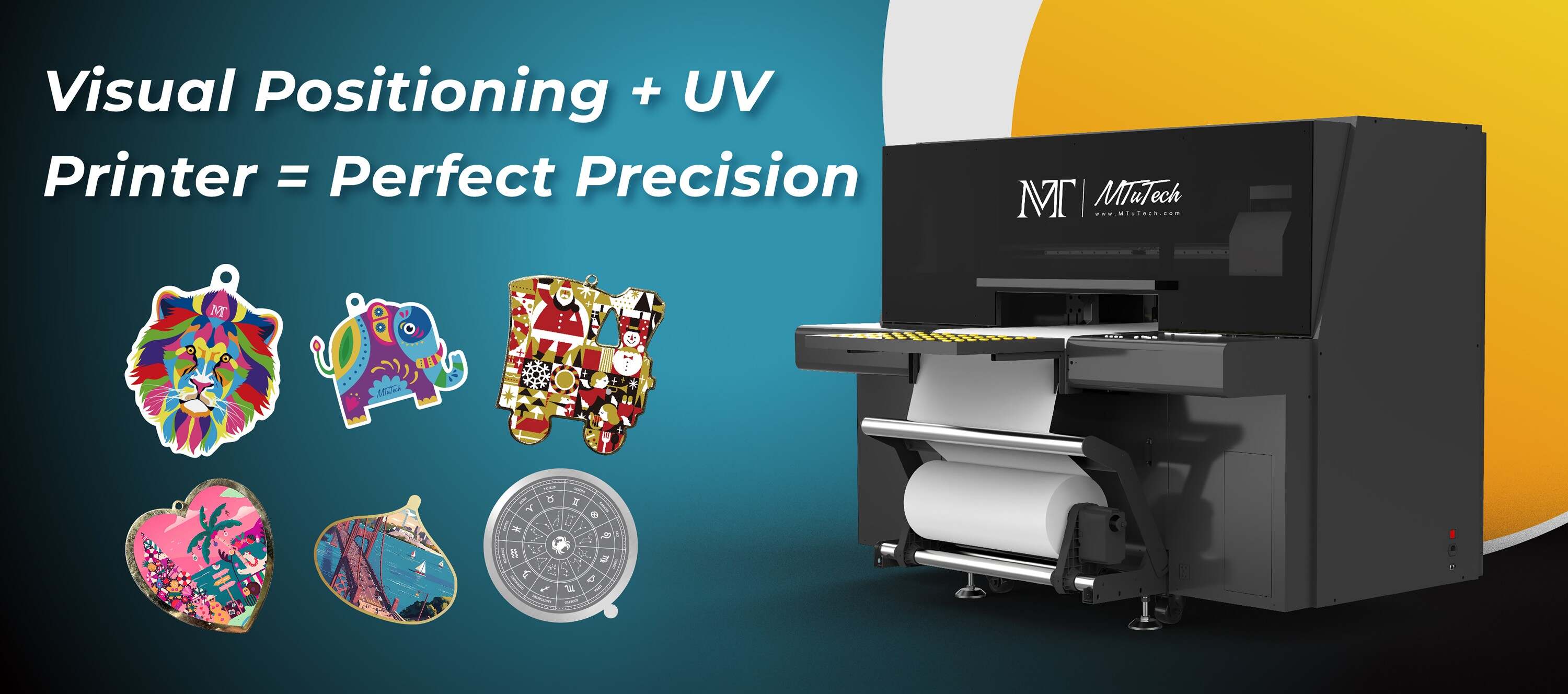 Visual Positioning vs. Fiducial Mark Systems: What’s Better?
Visual Positioning vs. Fiducial Mark Systems: What’s Better?
Introduction
In the realm of modern manufacturing and printing, two technologies have garnered significant attention: Visual Positioning and Fiducial Mark Systems. Both of these systems play a crucial role in ensuring precision in automated processes. However, they cater to different needs and applications. In this blog post, we will dissect both technologies, comparing their benefits, features, and ideal use cases to determine which system might be better suited for your operations.
Understanding Visual Positioning
What is Visual Positioning?
Visual Positioning technology leverages advanced imaging systems, including cameras and sensors, to identify and track the position of objects in real-time. The system uses visual data, often analyzing images captured by these cameras, enabling it to adjust the machinery's operation based on the actual position of an object, rather than relying solely on pre-defined coordinates.
Key Features of Visual Positioning
·
Real-Time Tracking: It allows for immediate adjustments based on the object's actual position.
·
·
Flexibility: Works well with varying object shapes, sizes, and colors.
·
·
Higher Accuracy: Provides precise alignment even in complex environments.
·
·
Reduced Setup Time: Requires less time to calibrate than traditional systems.
·
Benefits of Visual Positioning
The adoption of Visual Positioning systems can bring numerous advantages:
·
Increased Efficiency: With real-time adjustments, production lines can operate at peak efficiency.
·
·
Enhanced Quality Control: Reduces errors associated with misalignment, resulting in fewer defects.
·
·
Cost Savings: Decreases material waste and the need for adjustments after initial setup.
·
Exploring Fiducial Mark Systems
What are Fiducial Mark Systems?
Fiducial Mark Systems utilize specific markers, often printed or adhered to objects, to assist in the automation of processes. These markers serve as reference points that automated systems can easily recognize, providing a way to calibrate machines according to these fixed points.
Key Features of Fiducial Mark Systems
·
Defined Reference Points: Use of specific markers allows for straightforward identification of positions.
·
·
Reliability: Operates consistently in predictable environments.
·
·
Simplicity: Easiness of setup and maintenance, particularly in controlled settings.
·
·
Cost-Effectiveness: Generally low-cost implementation compared to more complex systems.
·
Benefits of Fiducial Mark Systems
Fiducial Mark Systems offer their own set of advantages:
·
High System Compatibility: Works well with most automated machinery without extensive modifications.
·
·
Stable Performance: Reliable in environments where conditions remain relatively unchanged.
·
·
Easier Troubleshooting: Markers provide clear indicators for errors, simplifying diagnostics.
·
Visual Positioning vs. Fiducial Mark Systems: A Comparative Analysis
Applications
When considering the applications of both systems, it’s essential to recognize the environments in which they shine:
·
Visual Positioning: Ideal for dynamic settings where objects may vary in size or shape, such as packaging lines or custom printing processes.
·
·
Fiducial Mark Systems: Best suited for environments with consistent objects and layouts, like assembly lines where components are uniform and predictable.
·
Accuracy and Precision
Both systems claim high accuracy, but they achieve it differently:
·
Visual Positioning: Excels in situations with complex geometries and can adapt to changes in real-time.
·
·
Fiducial Mark Systems: Provides consistent accuracy where markers are properly placed and maintained.
·
Cost Considerations
Cost is often a crucial deciding factor:
·
Visual Positioning: Typically requires a higher initial investment due to advanced technology and ongoing software updates.
·
·
Fiducial Mark Systems: Lower setup costs with straightforward maintenance, making it appealing for budget-conscious operations.
·
Ease of Use
Usability can be a significant factor when implementing new technologies:
·
Visual Positioning: May require specialized training to maximize efficiency, particularly in complex systems.
·
·
Fiducial Mark Systems: Often easier and quicker to implement, reducing training time for staff.
·
Conclusion
Both Visual Positioning and Fiducial Mark Systems have their own unique advantages and ideal applications. Choosing between the two largely depends on your specific operational context and needs. If you're dealing with multiple product variations, changing environments, and require flexibility, Visual Positioning may be your best bet. Conversely, if your operations remain consistent and predictable, a Fiducial Mark System might deliver the reliability and cost-efficiency you need.
If you're looking to enhance your production capabilities with cutting-edge technology, explore our high-quality Visual Positioning UV printers here and see how it can make a difference in your operations. Regardless of which system you decide on, both have a role to play in the ever-evolving landscape of manufacturing and printing technology.
FAQ
What is the primary difference between Visual Positioning and Fiducial Mark Systems?
The primary difference lies in their methods of object recognition. Visual Positioning uses cameras and imaging technology to identify objects dynamically, while Fiducial Mark Systems rely on specific markers placed on objects to provide reference points for automation.
Which system is more accurate?
Visual Positioning generally offers higher accuracy in complex environments due to its ability to adapt to real-time changes. Fiducial systems are also accurate but rely heavily on the proper placement and maintenance of markers.
Are there any specific industries where one is preferred over the other?
Yes, Visual Positioning is often favored in industries where product variation is common, like printing or packaging. Fiducial Mark Systems are commonly used in assembly lines where the objects and processes are more controlled and consistent.
Can one system integrate with existing equipment more easily than the other?
Fiducial Mark Systems often integrate more seamlessly with existing setups due to their simpler technology. Visual Positioning systems can also be integrated but may require more specialized adjustments and training.
How do maintenance requirements compare between the two systems?
Fiducial Mark Systems usually have lower maintenance requirements since they depend on static markers. In contrast, Visual Positioning systems may require more regular updates and calibrations to ensure optimal performance.
